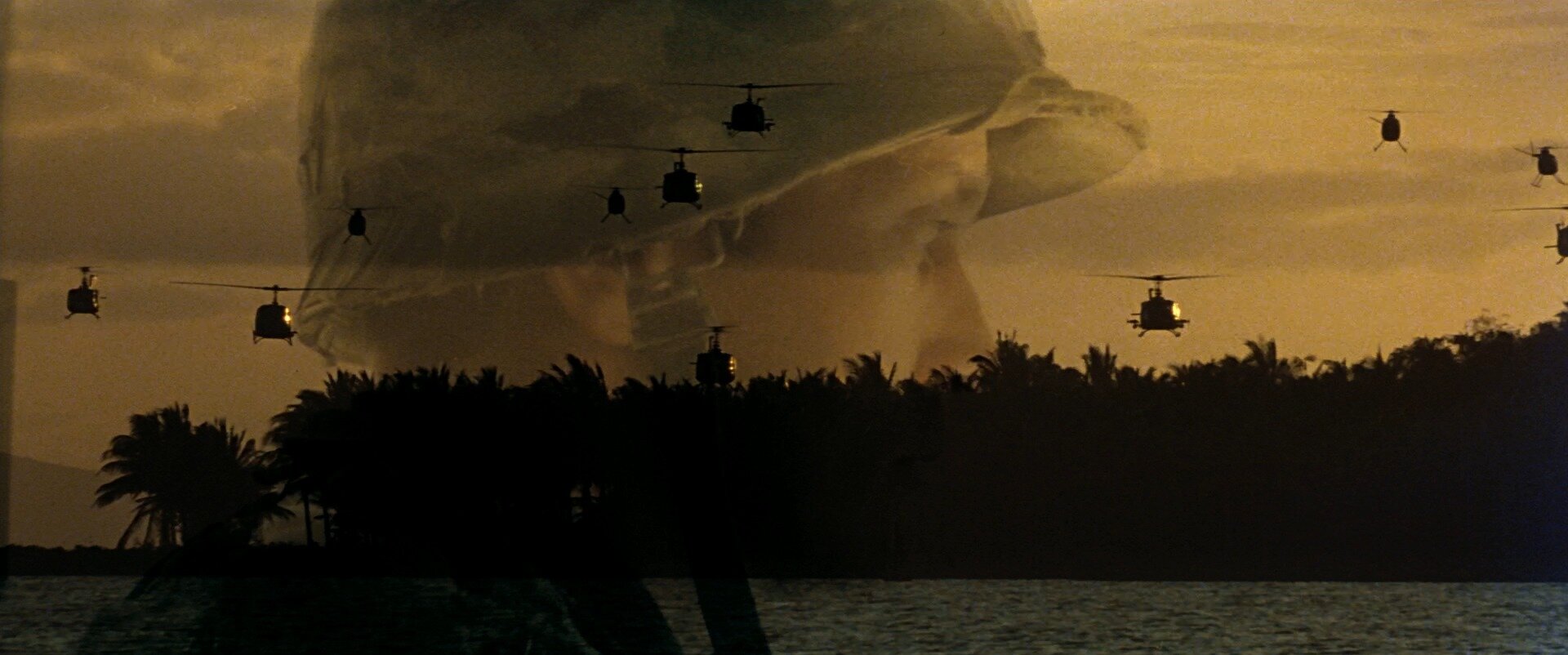2020 Tarkovsky Prize Runner Up: Alex Clare
Apocalypse Now - The Horror of War
By Alex Clare
“The horror, the horror.” These were the final words of Colonel Walter Kurtz in Francis Ford Coppola’s 1979 war film, Apocalypse Now. Unlike most American war films, which glorify the heroism and grand spectacle of war, Apocalypse Now illustrates an honest depiction of all aspects of the Vietnam War, horror included.
Right from the beginning of the film, Coppola introduces the horror of war in the form of post-traumatic stress disorder. Our protagonist, Captain Willard, is returning to war after having been sent back to America. Imagery and audio of choppers flying, forests being scorched, and the chaos of war are superimposed on Willard’s restless head. Immediately, we can see the effects war has on a man. Willard can’t integrate back into society, all he knows is war. He needs war. He needs to be given another mission, and his wishes are granted. His mission is to find and kill Colonel Walter Kurtz, who the military deems too crazy to be kept alive. The war has gotten to his head, and he’s become a bloodthirsty maniac. However, we come to find that every soldier in the war has become a killing machine.
In many American films, war is glorified by depicting heroic characters saving the day with loud, triumphic scores. Unlike the typical American war film, Apocalypse Now’s score is eerie and subtle. In Apocalypse Now, war is ironically glorified to criticize the morals of the American people. The characters are enthusiastic about committing terrible acts against innocent people. War is even sexualized in one scene in which Playboy models dance for the soldiers while holding guns. Any morsel of sympathy has been buried deep within the exoskeleton of masculinity that the soldiers exhibit. They call the Viet Cong by the name “Charlie.” This effectively dehumanizes the enemy by categorizing each individual under one homogenous entity. The soldiers don’t know who Charlie is, they just know he must die.
Colonel Kilgore, the commander of an attack helicopter squadron, is the epitome of the emotionless killing machine. He agrees to invade a beach, killing numerous innocent civilians, because of the prospect that the beach may have good waves for surfing. Kilgore’s character has all of the stereotypical masculine values that were instilled into young men of this era. In perhaps the most famous scene in the film, the helicopter squadron annihilates a Vietnemese village as Wagner’s “Ride of the Valkyries” plays. In this brilliant use of music, the irony is that the song is about a group of flying women warriors. The soldiers are so engrossed in the war that they are ignorant to the fact that their anthem is about powerful women, the antithesis of their masculine personas. It is a horrifying notion that the men of this era could be turned into killing machines because their masculine values are exposed to a war.
While Captain Willard already had war experience, other characters entered the war without any exposure to such experiences. The most notable of these characters is Lance Johnson, a surfer. Lance comes from a background that is vastly different from what he’ll come to experience in Vietnam. He grows fond of a puppy that the crew finds after killing a group of Vietnamese civilians. This puppy is a symbol of innocence in a land that is becoming less and less innocent each day. While he holds onto the puppy for as long as he can, Lance eventually loses the puppy during firefight with the Viet Cong, an experience that traumatizes him and contributes to his loss of innocence. Throughout the film, Johnson’s entire appearance changes drastically. He goes from having a perfectly toned, unscathed figure to being completely inundated in Vietnam through his appearance. He paints his face in order to blend into his environment and he makes a sort of headdress out of an arrow that was shot at him, fully embracing the violence of war. It is a common motif in the film for characters’ appearances to reflect the effect the war is having on them. Willard himself completely camouflages himself as he finally completes his mission. In the moments in which Willard commits his most cruel acts, the soil of Vietnam covers his skin. He is fully consumed by the war.
The horror of the war is incredibly harmful to almost every character in the film. However, one character stands as the lone exception to this generalization. Colonel Kurtz has learned to accept the horror of the war rather than be harmed by it. He has become acquainted with the horror, and as a result he thrives in this environment. While other characters may thrive in a war environment, they are still greatly harmed by the war, whether it's from PTSD or because they’ve lost their human qualities and have become war machines. Kurtz is not harmed by the war, but rather benefits from it, and that’s because he embraces its horror. When he is killed, it is intercut with the ceremonial slaughter of a bull. This powerful moment drives home the idea that Kurtz has embraced the culture of Vietnam. After Captain Willard kills Colonel Kurtz, images of war once again spiral in his head. This serves as a book end for the film. The difference is that this time, Willard understands the horror of war, and that is conveyed by Kurtz’ final words replaying in his head: “The horror, the horror.” Captain Kurtz, the embodiment of the horror of war is finally dead: the only semblance of a happy ending in the film. However, the horror of war still lives on.


